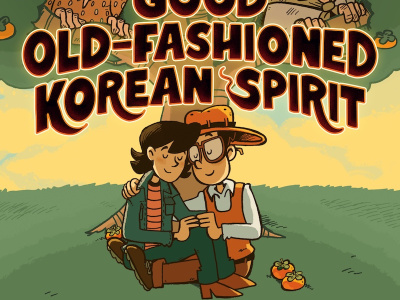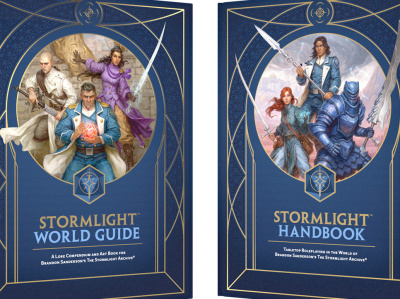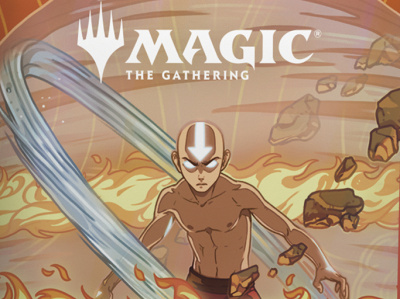ICv2: As we did last year, we'd like to start out by talking about the overall market, starting with the comic stores. In your interview a year ago, you said, "Well, things are down a little bit." (See "ICv2 Interview with IDW Publisher Greg Goldstein") What's your perspective on changes since then?
Greg Goldstein: I think things probably remain the same. I get the sense from talking to peers and colleagues in the industry that the direct market is still soft. We still hear about retailers who are either closing or in trouble. That concerns us tremendously. We certainly try and do what we can to support and help them.
You get the sense that the overall Direct Market is weaker than it should be. I saw some ICv2 numbers the other day that suggested the whole industry was down. That was just not the Direct Market (see "Comics and Graphic Novels Down 6.5% in 2017"). You're closer to the overall industry, I think, than we are. Because in the case of Marvel and DC, the comic book business is such a small piece in their annual and quarterly reports, we don't get much granular information that's useful on their sales.
I analyze our market share, I analyze our competitors' market share. It feels definitely like the market is soft.
On the book market side, it's really hard for us to say, because we made that transition to Penguin Random House Publisher Services. It's only been a little bit more than a year. Any transition has some stuff that you just need to sort through. They're trying to figure out what part of our product line works best in which places, and we're trying to help them sort through that. But it definitely feels like the industry is not as strong as it was maybe two years ago.
At the same time, and I've probably said this to you in interviews 10 years ago, we are at the center of the pop culture universe, IDW in particular. We're poised to capture whatever is going on in the imagination, and market Ghostbusters product to people who love Ghostbusters, and Transformers product to people who love Transformers.
Or Marvel product to people who like Marvel products. [laughs]
Here's a case in point. We're targeting the Marvel comics for the 8 to 12‑year‑olds. Those are kids who are growing up on the Marvel universe in the movies. It's good for the industry; it's good for us; it's good for Marvel. We want to have those kids tell their parents, "Take me to the comic book store. I want Spider-Man."
You know what? We've only been in the kids business six years. We're already one of the established leaders. We saw that with My Little Pony. Kids told their parents, "I want a My Little Pony comic book." Skylanders had some of that, and some of the other kids' products that we've done. Sonic certainly has a collector base, but there's also kids buying Sonic the Hedgehog comics.
It's been a great nine months for us. We added Star Wars, we had Sonic, we're adding these Marvel books. Whatever industry softness there is now, I'm extremely optimistic about our future.
We just interviewed comic retailers for the new issue of our Internal Correspondence magazine. One of the things they were talking about is how much harder it's gotten to order (see "Pro: ‘The Most Difficult Time to Order New Comic Books in 30 Years’") because their sales are less predictable. They're less predictable, for one thing, because there's so many more choices; there's so many titles and there's so many variants. A couple of people had almost identical examples of, ‘Well, you know, I buy this many of the regular cover of Batman. I buy this many of the variant. I think I know the ratio, and the next month it flips. Then I'm left with one that I have too many copies of and another one that I don't have enough copies of...’ As a result, that suppresses their margins. It also makes it harder for them to take risks, because they don't have this solid base that they can rely on. Another part of that is that the number of pull boxes is down, nationwide. It’s not necessarily that there's less buyers coming into the store, they're just not willing to commit, because there's so many choices every week. What's your reaction to that situation? How is IDW approaching this problem?
Let's start at the beginning. On the covers, two things have happened since we met last year. One is that we have reduced the amount of covers significantly. Of course, there's still retailer exclusives, there are still convention exclusives. There's things like that that have a very specific purpose, but for the typical fan who goes into a comic book store, we are pretty much in an A and a B situation. The Bs are meant for (I don't think we call them subscriber covers anymore) the pull box customers. They're meant for that.
Obviously, when the retailer chooses to give fans a choice, that's great, too. Particularly in some of our licenses, there might be an art cover and a photo cover if it's a Star Trek book or if it's an X Files. It feels like one person might like choice A and one person might like B.
I think that's the kind of choices we want to provide, but there are very few comics where we have more than the two main covers, plus maybe a retailer incentive or two.
Do you have any idea what kind of a percentage reduction you've made in the number of covers?
Off the top of my head, it's not like we were doing three or four regularly for every book, so 20 percent, 30 percent? It's a decent number.
The other change, I don't know if the retailers are aware of this. We also heard there were too many books and we've trimmed the line.
The reality is, when we met last year, we were probably approaching the high 40s to 50 monthly comics. Now we're probably about 15, 20 percent less than that. We're probably right around 40, 42 comics a month.
June was spectacularly low in the number of titles for IDW. Was that just an aberration?
Yes. It's the aberration that is caused by relying on a printer and their schedule, trucking, and all those other things. We had a logistical nightmare in June in which, unfortunately, the majority of our June books ended up being last week books, and they missed the week. We understand how frustrating that is for the retailers. It's frustrating for us.
What was the percentage change in the number of titles?
Basically, we're looking at about an 18 to 20‑percent reduction in titles. They're the weaker sisters. Obviously, we're not going to get rid of the titles that make us all money. [laughs] It was clearly, in the case of many of our brands, we might have had two books a month, when we probably should have only had one.
Maybe there were some brands that didn't deserve a monthly comic. Maybe they just deserved a one‑off, a mini‑series, or something like that. We've really worked on the schedule, tried to put a little bit more variety into it, but at the same time, particularly on the comic book/periodical side, really trimmed it a little bit. That gives our editors a chance to focus a little bit more, which is also great.
It seems like you're doing the same thing on your licenses. You let Ben 10 go, but you picked up Marvel. That's a good trade, right?
Nothing against Ben 10, it just wasn't selling for us in comic books. Anybody who's known me a long time knows I really enjoy the things that come into the popular culture and hit the zeitgeist. Then, at some point, they don't. At some point, you go, "OK, well, you're right. This book, right now, needs a rest." It doesn't mean there might not be Ben 10 comics again.
I think this is probably true of all of the publishers (or certainly Marvel and DC), when we stop publishing, it may need a break and it may need to stop publishing a certain comic. It may need just to be refreshed. Give it a little bit of time and come back with it.
In the case of Transformers, the IDW Transformers universe has been going on since the beginning. John Barber's been writing one of the books. Other writers have been writing it. We talked a few years ago about at some point, reaching a satisfying conclusion and then starting over, and coming up with something that will still be the Transformers that you know and love, but we may have a different approach. We may have different writers.
That's happening now?
Yes, that's correct. The big Transformers event is called Unicron. It started last Wednesday [July 11]. It's a six‑issue series. It runs through October, and our regular Transformers books tie in in a way that hopefully people will find satisfactory. It doesn't have dozens and dozens of titles. It's a handful of titles.
One of those Transformers titles is a weekly?
Unicron is twice a month.
We’ve heard retailers asking, "Well, are my customers coming in often enough to support these increased frequency releases?" Is that something you've done before, and what was the reaction?
There's been a lot of discussion about these weekly events. We've definitely gotten some feedback, some of which is positive, some of which is not. We always look at feedback in both what people are saying, and in the sales of the books.
Sonic the Hedgehog was a four‑issue weekly event in April. Every one of those books sold out, and every one of those books went to a second print. As publishers, what are we to make of that?
Certainly, there's been some online comments about, is a weekly event too much? It's hard to capture the FOC. There are issues, we understand that, and we're looking at it. IDW will never publish in a vacuum, consumer and retailer reaction are really important to us.
They should be important to all the publishers, but I can speak for IDW, and it's important to us. We're looking at those events and thinking about them, thinking about why Sonic might be different. Star Wars: Forces of Destiny, those were five one‑shots. The stories were not continued from one story to another.
It raises the question, if you sell them or market them as one‑shots, are you then in a situation where the retailer can go, "I think this character's going to be more popular, and this character's going to be less popular. I'm ordering based on that." That's something we may look at for additional five‑week events.
As one‑shots, you mean?
Right. We can market them as a theme, and we can do things. We do have a one‑shot announcement for an event coming up like this. They're not going to happen every month. We understand that it just might be too much for consumers or retailers.
Overall, the changes in the Direct Market, do you feel those are cyclical or secular?
I think they're cyclical. Like you, I've been in this business forever. John Barber was quoted recently saying that people have been predicting the end of comics since 1945, [laughs] and we're now in 2018.
We just saw a quote like that from Joe Quesada also.
Current Marvel guy, former Marvel guy. I think we continue to find ways to adapt and change. The biggest challenges are not our competitors in the industry. Our biggest challenges are all the distractions that everybody has today. When I see somebody an hour on social media, that's an hour that they're not consuming other entertainment.
The question is, how do we capture that? You see this year a lot of the big studios are trying to deliver short‑form entertainment to get the big intellectual properties in front of consumers that are looking on their phone anyway and they'll watch a four‑minute short or a two‑minute short.
Even the new Turtles reboot is 11‑minute episodes instead of one long 22‑minute episode. You're delivering shorter forms of entertainment for people who are just have less time on their hands.
And shorter attention spans. [laughs]
I don't disagree with that statement.
Click here for Part 2.









